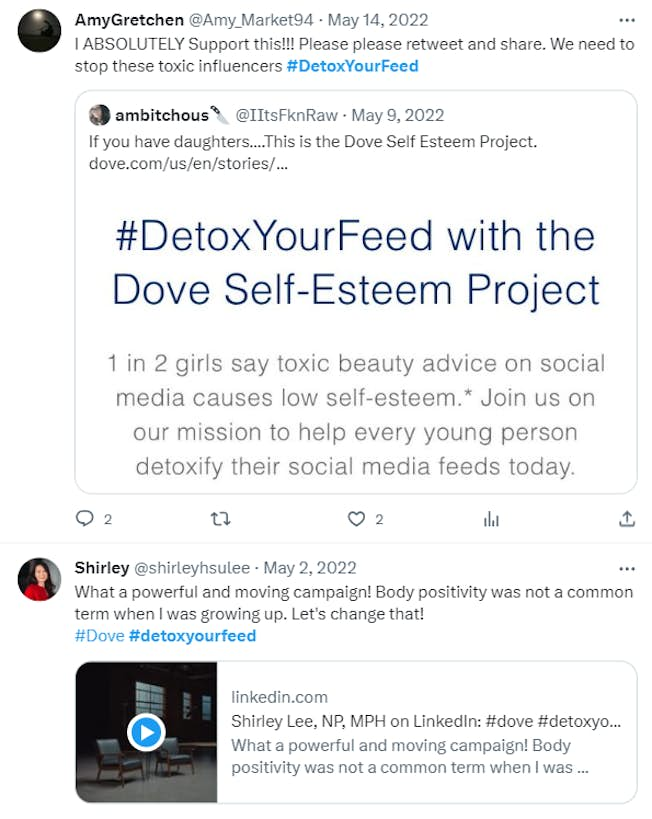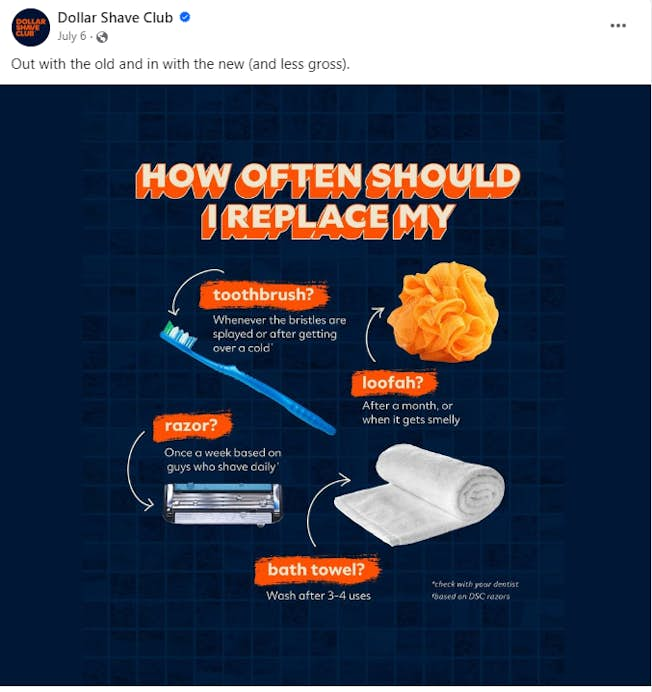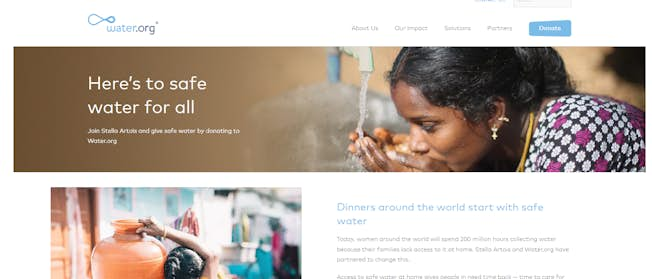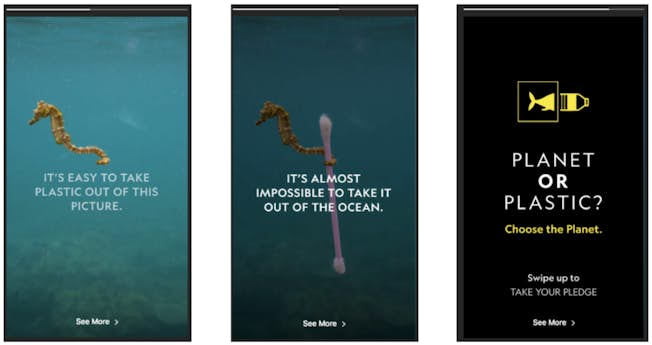Oct 6, 2023
7 Ways to Use Social Media for Storytelling
When we think about the stories we read as children, they had characteristics: a beginning, middle, and end; a climax or conflict; and some sort of moral lesson. Great content on social media can also convey a similarly rich message when done correctly.
A story isn’t just about words – a great story teaches us something about the world and ourselves. And great content marketing tells a good story.
Today, we’re seeing more innovative uses of storytelling incorporated into brand building as customers demand more from companies. More people want to understand the ethos and mission of a brand to see if it is committed to something meaningful (such as a social issue or cause), rather than just buying something because it’s 'cool'.
So, what’s the best way to tell a story on social media? Let's look at 8 great ways to do it!
1) Develop a (Long) Story Arc
A story is essentially a sequence of events with some key elements. With social media, you have plenty of options to tell stories in new ways that cross the boundaries of traditional storytelling and advertising. While you may have some restrictions (for instance, length), you also have a number of tools at your fingertips.
Before you develop your social content as part of a campaign or advertising strategy, it’s important to look ahead at your end goals and work back. Ask yourself questions like:
- What does your business goal look like one year or five years from now?
- Where would you like to be in terms of preferred or target audience?
- What is your growth plan demographically and even internationally?
- How are you performing in comparison to your competitors?
Every single clip, blog, video, or image needs to be a mini-story in itself, but what about taking your audience and customers on a journey that lasts longer than that? When you think about the fact that each piece of content contributes to your brand and business story, you have the potential to 'hook' people over the long term.
To this end, you can think of your 'story arc' – the beginning, middle, and end. Not only for each piece of content but also in connection with your long-term goals and unique offering or USP.
Let's look at a great example, the beauty brand Dove. Originally launched as a soap brand, the company has put storytelling at the heart of its marketing campaigns to focus on empowering women through a message of self-esteem and self-acceptance.
Dove's #Detox YourFeed campaign aimed to demonstrate the harm of toxic beauty advice. Its use of social media helped get the message out as people shared using the hashtag.

2) Show, Don’t Tell
When it comes to any kind of advertising, whether it’s social media-based or not, it’s better if you show your story rather than tell it. But, what does this mean?
In the realm of social media, this might be as simple as creating a compelling video, or infographic, or using a stunning visual in combination with a catchy title to get your message (or the gist of it) across quickly. After all, you only have a few seconds to make your point, so why not make it as clear and visually inviting as possible?
Technology company, GoPro is a great example of this 'show, don't tell' storytelling. While they do have promo videos to show off their newest camera, the majority show how their cameras are used and the results are pretty spectacular. It's not only the GoPro crew that posts videos but millions of customers who want to share their sporting feats.
Here's a compilation of the 'Best of 2022' on YouTube that encapsulates what their cameras can do without mentioning the product but clearly showing it being used!
3) Write Like a Writer
Do you have experience writing copy, fiction or non-fiction? The truth is that while a bit of experience helps, you don’t really need to be an expert in any genre to nail storytelling on social media.
What will grab attention, though, is creativity, boldness, and the type of message that cuts to the chase – or at least gives a hint of the amazing things to come.
Depending on your audience, sometimes this will incorporate more of a story which includes some typical narrative elements. Think of the hero’s journey, for instance: it typically incorporates an unexpected hero (the protagonist) who finds themselves in a situation where they must do something life-changing (save the world from destruction).
If you are able to invite your audience in using the same tools that fiction writers do, you probably will get them engaged from the get-go. Plus don't forget the importance of SEO writing when it comes to search and social media, the right keywords mean getting to the right people.
Here's an example from the Dollar Shave Club, a brand which exploded onto the men's personal grooming scene with messaging that was innovative and funny. This is one of their Facebook ads that uses its trademark humor to promote its razors by tapping into the issue of personal hygiene.

4) Use Influencers & Other Partners
Some of the most innovative social advertising we’re seeing today tends to combine two or three elements: a celebrity or influencer, a genuine cause, and a product.
This combination of elements taps into an issue that people care about by leveraging the power of a relevant influencer or brand (make sure the influencer or partner is relevant, otherwise your ad could fall flat).
A great example is GymShark's #Gymshark66 campaign where they challenged people to change their lives by forming positive habits. To kick off the campaign, the brand partnered with some fitness influencers and created a video series called “Stories of the 66” where people talked about their journey. The campaign resulted in more than 240 million video views and over 750k posts under the hashtag.
One area where influencers and partnerships can work well is the non-profit sector. By getting backing for a particular social issue or cause, the charity can benefit by raising awareness and driving interest which can result in increased revenue from fundraising or volunteer recruitment.
A perfect example of this is how Matt Damon's company water.org partnered with Stella Artois as their spokesperson for the organization’s clean water campaign to connect the brand and the cause in a memorable way. This is a sort of triple-whammy where audiences get in an effort to also promote the company’s focus on providing clean drinking water to underprivileged communities.

5) Connect With Your Followers
Social media platforms offer plenty of built-in tools to understand the types of posts that drive the most engagement. This should give you insight into the popularity of your content across channels.
You can look at your social media data to gain insights and see what was most effective. Was that one post, longer blog, or ebook something that resonated in the past? Or perhaps it was a funny video that got a lot of shares? You can use these insights to get a sense of what is hitting your audience and build a new story from there.
Consider using Facebook Live, tap into TikTok trends or create clever and funny videos to help explain your mission and message in a fresh way. People who’ve followed you for a while are likely to get bored seeing the same old things in their social feeds, so it’s important that you spice it up at every chance you get.
Have a look at the cleaning product company, Scrub Daddy's TikTok page to see how they use humor to engage followers (3.8 million and counting) and promote new products.

6) Make It Meaningful
So maybe you’ve conducted extremely thorough audience research, and you’ve gotten to know your current customers well enough.
If you’re developing a brand story or campaign, the key element behind reaching people is that you have to find what makes your product meaningful to the audience. What matters to them, not just in the short run but also in the long run?
For instance, an airline offering discounts on one-way flights may not want to just focus on how it’s less expensive, but on tailoring the ads towards digital nomads who may be taking advantage of such flights as a part of their ongoing lifestyle choice of staying “on the road.”
Once you figure out what is deeply meaningful to your audience, you can then develop a story-line – a brand story-line as well as a set of story-line snippets – to illustrate a need with an underlying emotional base.
Let's look at the airline JetBlue which recorded a 48% growth in social media discussion volume in H1 2022, the highest growth rate among the top-mentioned airlines according to Hospitalitynet. Its social posts look to tap into the needs of different travelers and promote offers to drive clicks. Here's a Facebook post prompting less frequent flyers to find out more about its loyalty program.

7) Use Tools to Get Up Close and Personal
There are plenty of social tools that can help you convey emotion, authenticity, and immediacy in a short period of time.
The main social media tools that come to mind are Instagram Stories, Snapchat Stories, and even TikTok. You can use each of them to produce real-time videos that last for a short period of time.
This type of ephemeral marketing is ever-popular especially with the millennial and younger demographic mostly because it’s a snippet of real life. People crave authenticity more and more in the digital world, so offering a real glimpse into someone’s personal world can sometimes feel like a breath of fresh air.
The best part about these tools (as well as Facebook Stories and Facebook Live) is that you don’t really need to create anything special, or even use a lot of text or words. Simply letting someone see a real-live person talking or doing something in real-time is more than enough. And it’s a perfect opportunity to demonstrate your product or service in a real-life context.
Take National Geeographic's use of Instagram Stories for example. By leveraging amazing photographs, the brand uses Stories to educate and inform people about a range of issues concerning the natural world and science. The simple but eye-catching Story asks people to pledge a commitment to using reducing the use on single-use plastics.

Final Thoughts
Consumers have so many choices when it comes to purchasing power, and this is a good thing for them. But sometimes it's a bad thing for marketers because there’s plenty of competition.
The good news is that there are still only a small number of companies that are able to use social media in such a way that they tell a story that truly connects. Make sure your brand is one of them.
Use Social Media to Engage & Grow
Social media is everywhere and it's the perfect place to engage and nurture customers. Our certified Social Media Marketing course taught by experts covers everything you need to know in ten modules. You will be able to conduct social research, develop social content, leverage social commerce and affiliate marketing, use it for customer service and develop a social strategy. You will also learn how to use the biggest social platforms from Facebook to TikTok to WhatsApp for your marketing activities. Get started today!
Related
- Categories:
- Articles
- Content Marketing
- Social Media Marketing
Upgrade to Power Membership to continue
your access to thousands of articles, toolkits, podcasts, lessons and much much more.
Become a Power Member- Login
- View Courses
- - - -
- Courses
- Resources
- - - -
- My Account
- Change Password
- Logout





